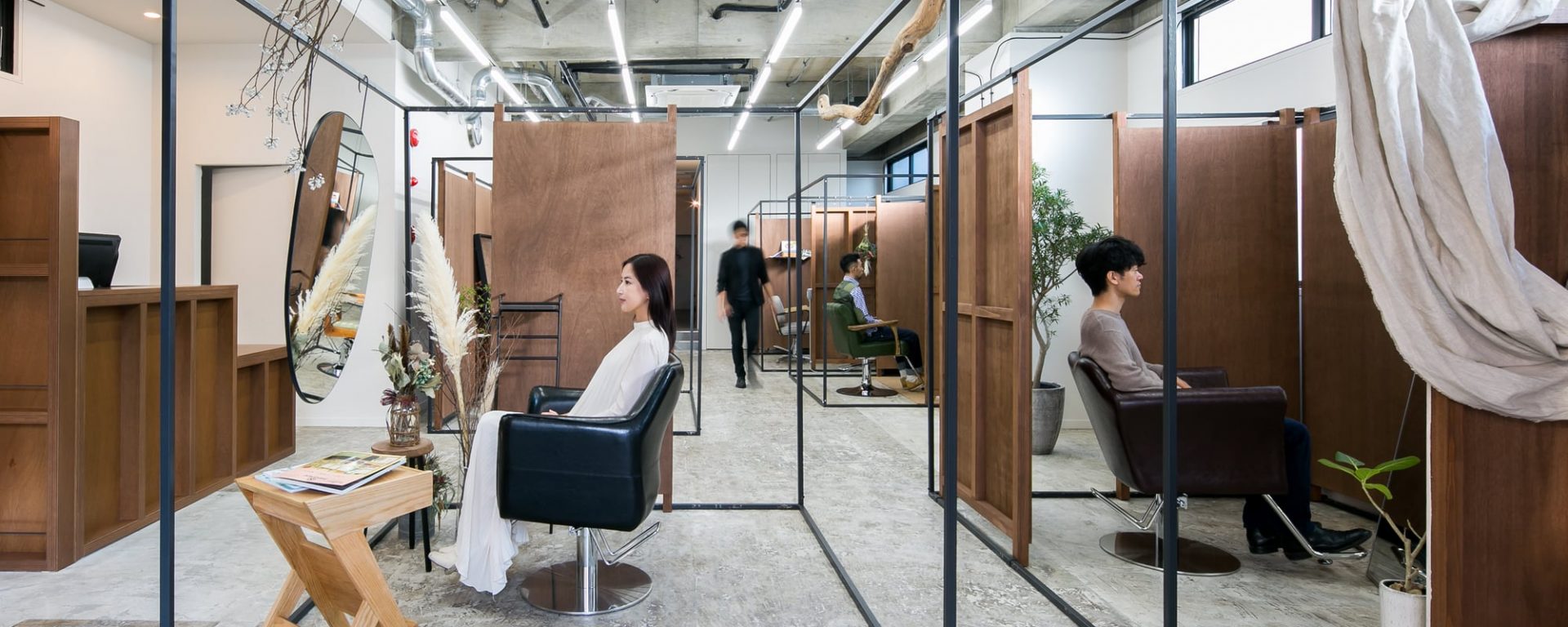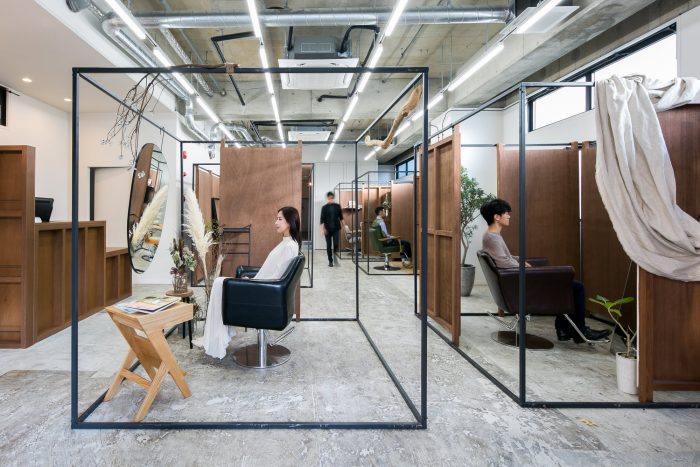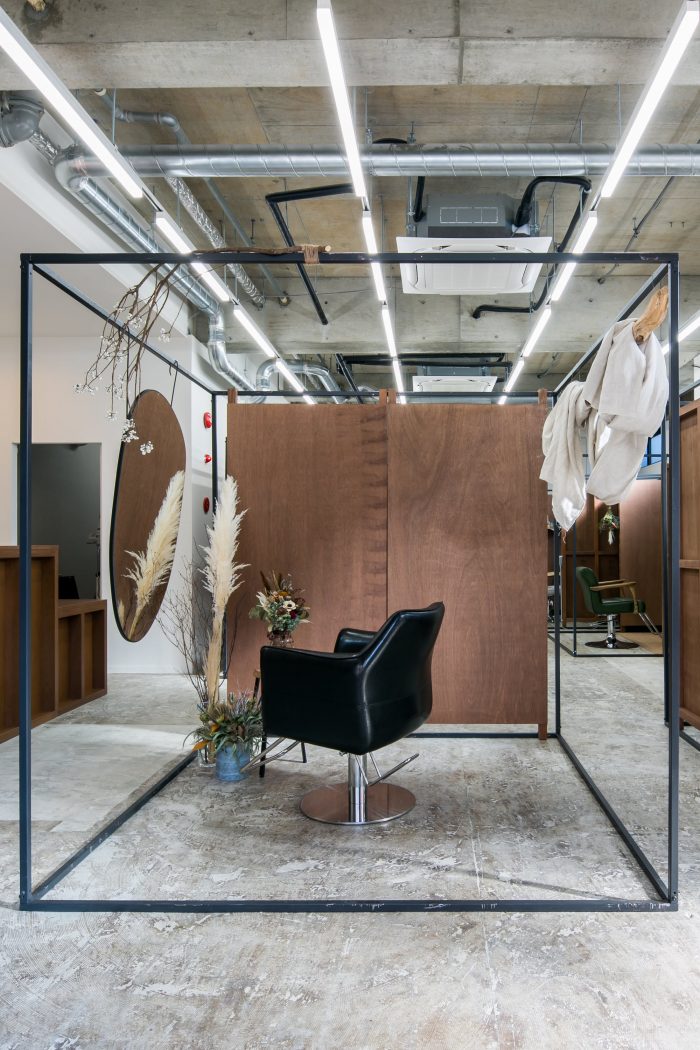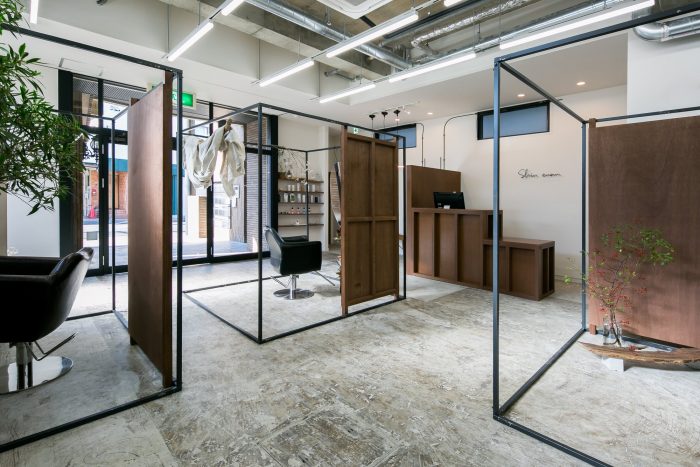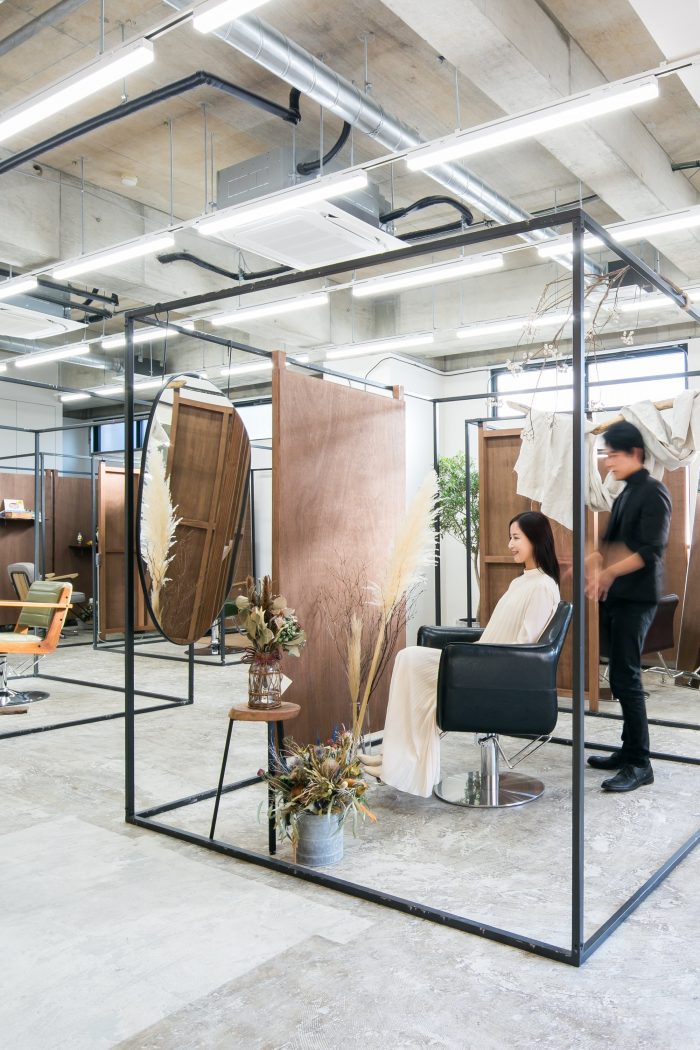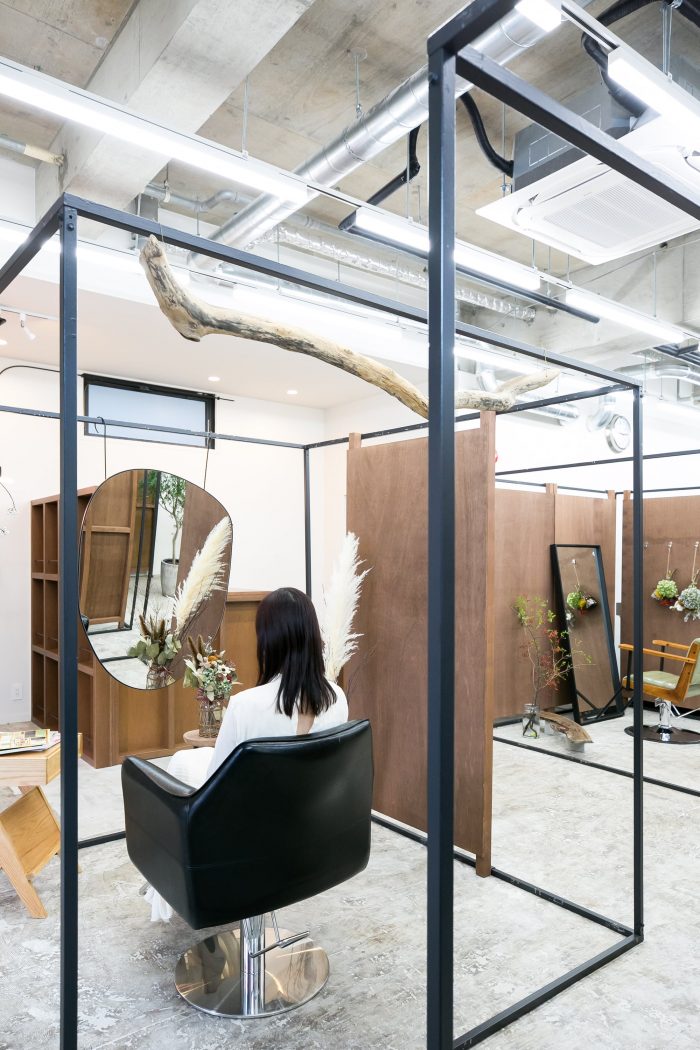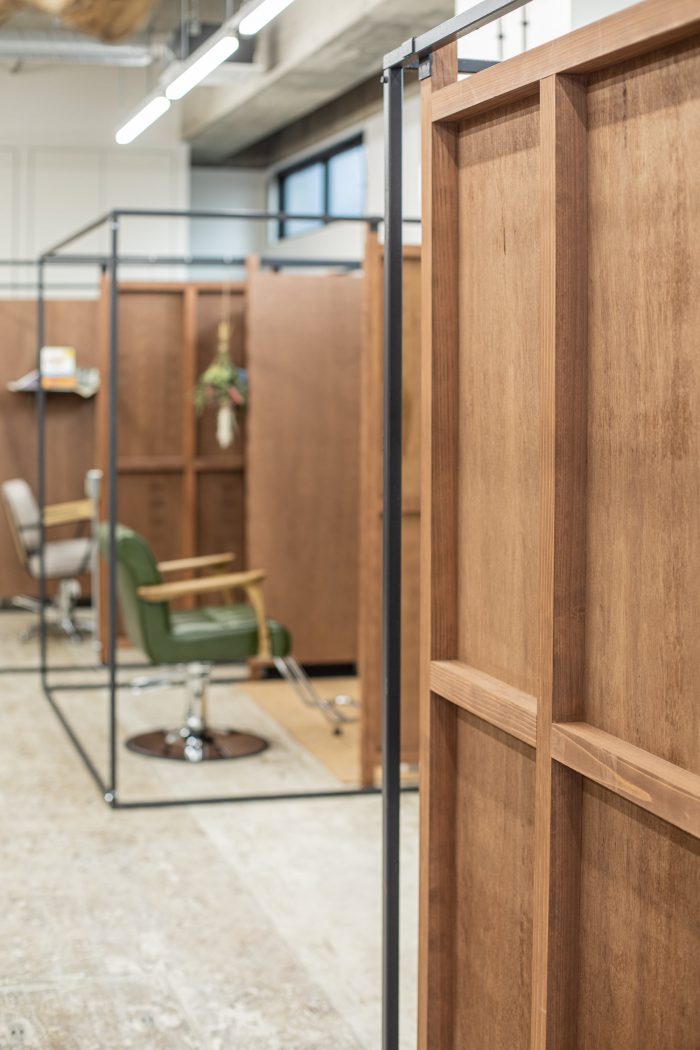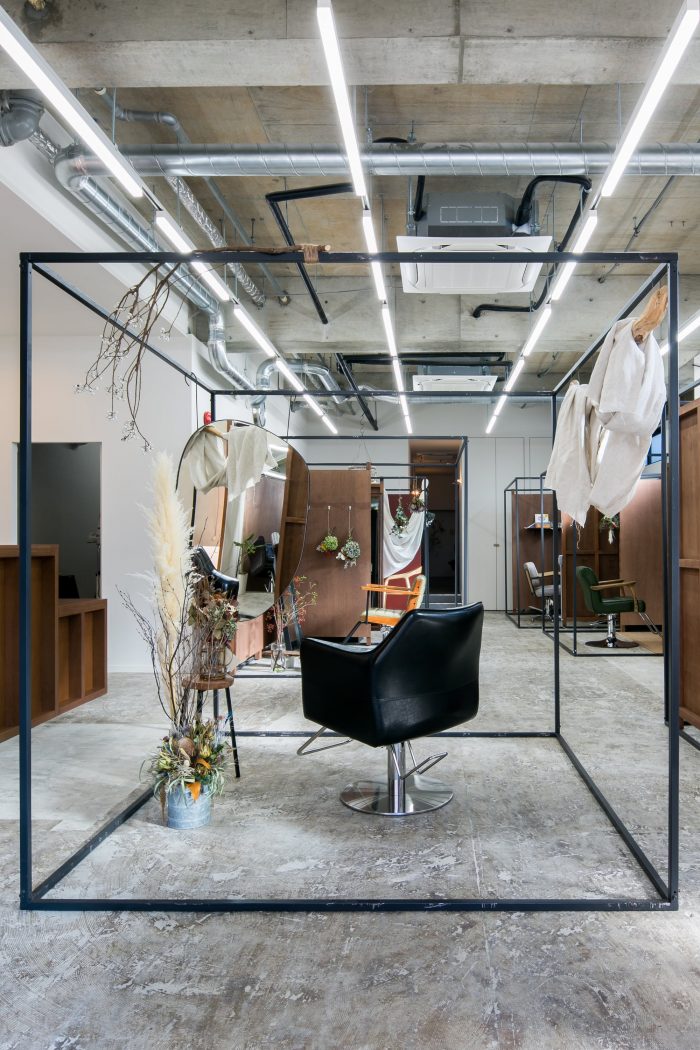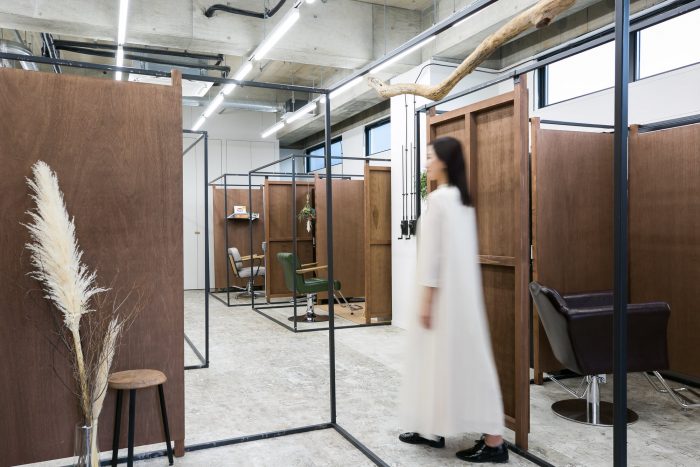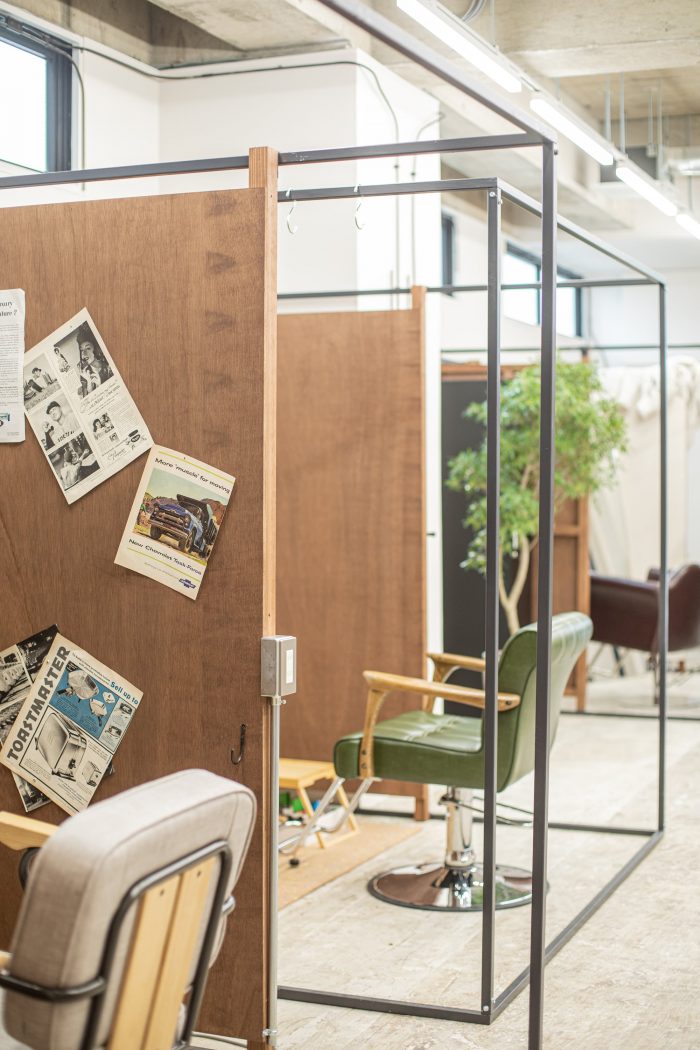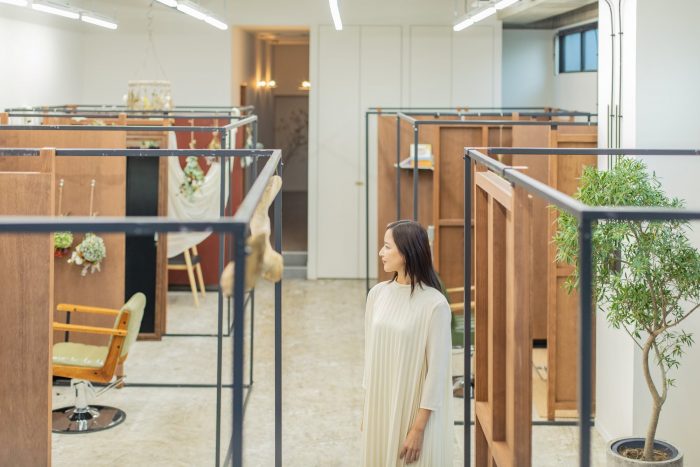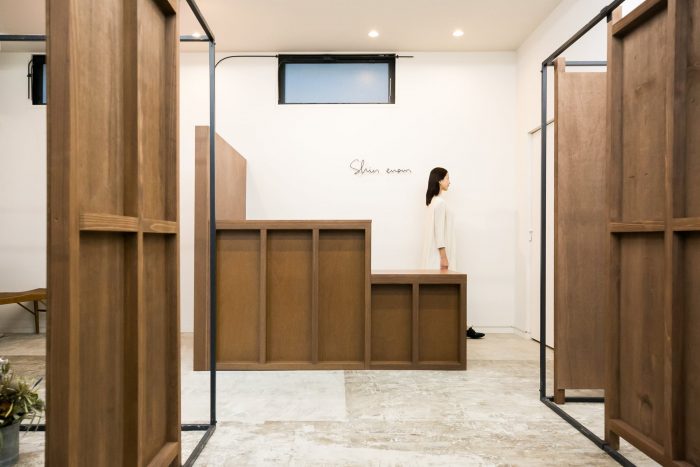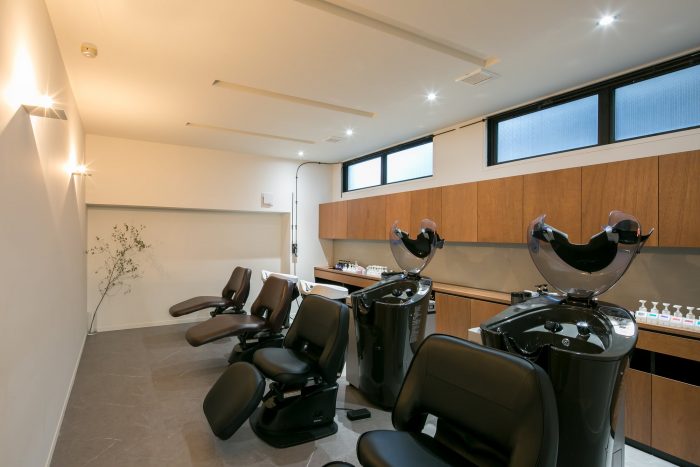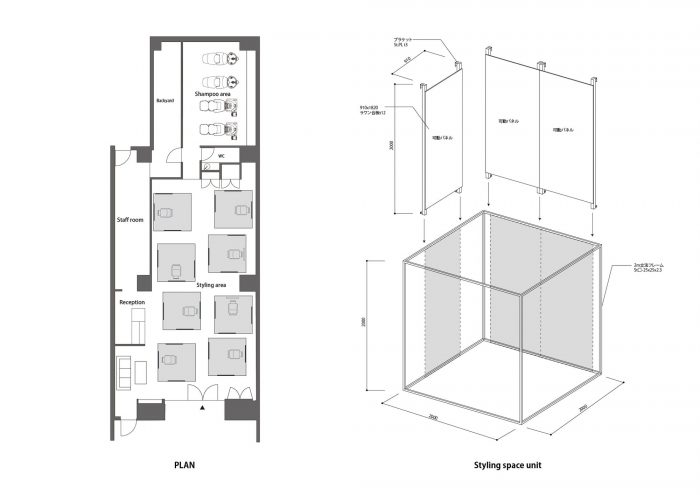茶室的两个类别是 “koma”(小于4.5张榻榻米)和 “hiroma”(大于4.5张榻榻米)。”koma “更注重 “wabi-sabi”※,对世界有一种浓缩的看法。在美容院的空间里,发型师的世界观被更清楚地定义。
The two categories of chashitsu(tea room) are “koma” (smaller than 4.5 tatami mats) and “hiroma” (larger than 4.5 tatami mats). “koma” is more focused on “wabi-sabi”※ and has a condensed view of the world. In the beauty salon space, the world view of the hair stylist is more clearly defined.
一个基于工作流程线的2mx2mx2m大小的立方体。这个空间被认为像一个 “摊位”,六个摊位分散在整个空间。空间的安排方式是,每个发型师可以根据自己的个性来安排空间。
A 2mx2mx2m cube of size based on the workflow line. The space is considered like a “booth,” and six of them are dispersed throughout the space. The space is arranged in such a way that each hair stylist can arrange the space to suit his or her own personality.
通过使用可移动的面板和镜子,该空间可以以多种方式划分。它是由一个低调的黑色框架和彩色的月牙形胶合板组成。通过进入和离开框架,目的是在每天和非同寻常的边界之间创造一种来来往往的感觉。我们的目标是以一种比茶室更简单的方式创造非凡空间的边界。空间的可变性也允许它被用于诸如弹出式商店和展览等超越美容院范畴的活动。
Wabi-sabi这个词是用来欣赏日本人的审美情趣的,它代表了 “简单和不完美中的美。
The space can be divided in several ways by the use of movable panels and mirrors. It is composed of a subdued black frame and colored lauan plywood. By entering and exiting through the frame, the aim is to create a sense of coming and going between the boundary of every day and the extraordinary. We aimed to create the boundary of the extraordinary space in a simpler way than in a chashitsu(tea room). The variable nature of the space also allows it to be used for events such as pop-up shops and exhibitions beyond the realm of a beauty salon.
※Wabi-sabi is the word to appreciate Japanese aesthetic sensibilities, which represent“beauty within simplicity and imperfection.
Architects: Shintaro Takeda Design Office
Area : 143 m²
Year : 2021
Photographs :Mayu Morita
Lead Architect : Shintaro Takeda
City : Kasugai
Country : Japan

